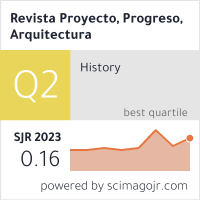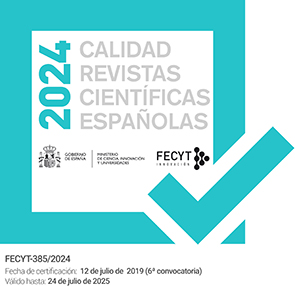CONVOCATORIA ABIERTA NÚMERO 35 - PROYECTO, PROGRESO, ARQUITECTURA
EMPLEE LA PLANTILLA DE PRESENTACIÓN DE ARTÍCULOS DISPONIBLE EN:
https://revistascientificas.us.es/index.php/ppa/Articulos
SERÁN RECHAZADOS AQUELLOS ARTÍCULOS QUE NO SE AJUSTEN A ESTA PLANTILLA NI CUMPLIMENTEN LOS METADATOS CORRECTAMENTE SIGUIENDO LAS INDICACIONES DE SUBIDA A LA PLATAFORMA OJS QUE SE INCLUYEN EN LA PLANTILLA DE ARTÍCULOS.
CONVOCATORIA PpA NÚMERO 35:
TERRITORIOS HÍBRIDOS: MÁS ALLÁ DE LA PERIFERIA
Fecha de publicación de la convocatoria: 3 DE JUNIO de 2025
Fecha límite recepción artículos: 6 de FEBRERO de 2026
Publication nº 35 PpA: NOVIEMBRE de 2026
En octubre de 1991, la revista Casabella publicó un artículo firmado por Bernardo Secchi titulado La periferia. En él, el urbanista italiano reflexiona sobre la condición de la metrópolis contemporánea, en la que la periferia ya no puede entenderse como una simple frontera entre lo rural y lo urbano. Secchi alude al concepto de città diffusa, introducido años antes por su compatriota Francesco Indovina, para describir el resultado del desbordamiento de la ciudad moderna: una forma de antropización del territorio caracterizada por la ausencia de centro y de borde, donde las funciones residenciales, productivas y agrícolas coexisten de manera dispersa.
Tres décadas después, aquella reflexión sigue vigente y adquiere nuevas dimensiones. La expansión de las infraestructuras, la movilidad extendida, la transformación de los sistemas productivos y logísticos, así como la emergencia de nuevas formas de habitar, han configurado territorios donde lo urbano y lo rural ya no se oponen, sino que coexisten. Estos territorios híbridos, ni plenamente urbanos ni estrictamente rurales, donde la ciudad se disgrega y el campo se densifica, han sido descritos con términos como supraruralidad, territorio difuso, territorialización urbana o ruralidades urbanizadas. Pueden ser percibidos como el tercer paisaje al que alude Gilles Clément. Son territorios que revelan, por tanto, una crisis de categorías, pero también la urgencia de nuevas herramientas teóricas, proyectuales y críticas para abordar estos paisajes complejos.
El proyecto arquitectónico, en este contexto, se enfrenta al desafío de pensar y operar más allá de las categorías tradicionales de ciudad y campo. ¿Cómo se construye el espacio en estos territorios híbridos donde la forma urbana se diluye? ¿Qué instrumentos disciplinarios permiten interpretarlos y proyectar en ellos? ¿Qué papel juegan la arquitectura, el paisaje y el planeamiento en la configuración de estos lugares intermedios?
Este número de PpA propone explorar los modos contemporáneos de habitar, proyectar y representar los territorios híbridos. Interesa reunir reflexiones teóricas, investigaciones territoriales, prácticas arquitectónicas y experimentaciones que aborden este fenómeno desde distintas escalas y enfoques, analizando sus múltiples fricciones y posibilidades: entre naturaleza y técnica, entre producción y residencia, entre ecología y economía, entre memoria y proyecto.
Invitamos a enviar contribuciones que examinen temas como:
- Urbanización postmetropolitana, fragmentación territorial y expansión sin forma.
- Tensiones entre extractivismo, conservación y habitar en zonas de interfaz rural-urbana.
- Proyectos que investiguen nuevas formas de ocupación del territorio rural-urbano, desmontando el binarismo campo/ciudad.
- Políticas, infraestructuras y escalas de planificación ante la indeterminación territorial.
- Representaciones cartográficas, narrativas críticas y dispositivos de lectura del territorio híbrido.
- Prácticas arquitectónicas que operen en los márgenes del sistema urbano y ensayen estrategias proyectuales en contextos híbridos.
El dibujo, herramienta esencial de la disciplina, debe ocupar un lugar central en las contribuciones, expresando sus argumentos y hallazgos a través de planos, mapas y fotografías.
Con Territorios híbridos: más allá de la periferia, PpA invita a pensar el proyecto arquitectónico como una práctica capaz de leer, interpretar y transformar los nuevos paisajes de borde contemporáneos, donde los límites se desdibujan y las categorías espaciales tradicionales ceden ante nuevas formas de urbanidad territorializada.
Autor de la convocatoria:Guillermo Pavón Torrejón, dr. en Arquitectura, profesor de la ETS de Arquitectura, Universidad de Sevilla.
Email de consulta sobre la convocatoria: gpavon@us.es




